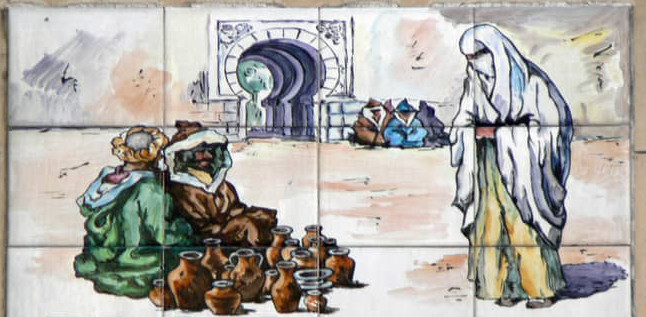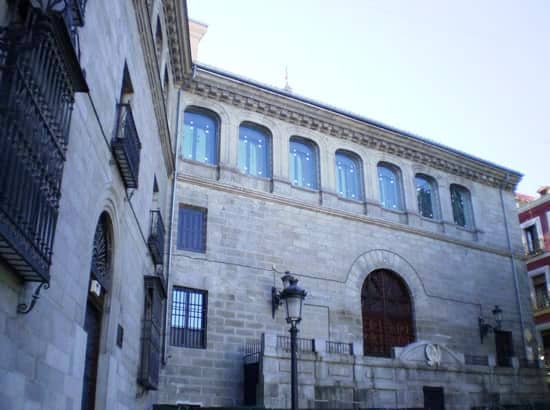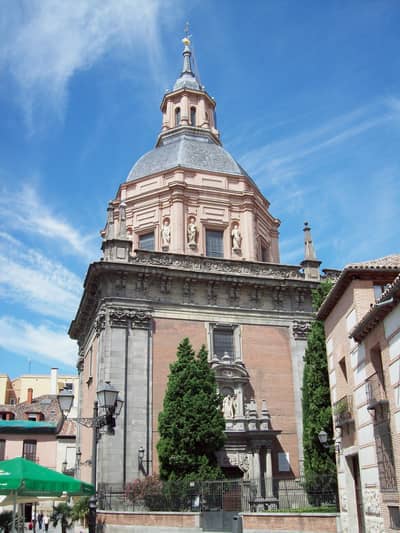
The Morería Neighbourhood: A Journey through Madrid’s History
The Morería Neighbourhood is a historic and distinctive neighborhood deeply rooted in the rich history of Madrid.
Located in the heart of the Spanish capital, the Morería Neighbourhood resonates with a rich blend of cultural traditions and historical vestiges, unveiling the legacy of Arab and Moorish influence in the region. Its narrow cobbled streets and ancient buildings tell stories that date back centuries.
This emblematic neighborhood expanded in the eastern part of medieval Madrid. During the Reconquista, after the city was captured in 1083 by Alfonso VI, the Muslim population was allowed to remain in the area. Even after the expulsion of the Moriscos in 1610, the Morería retained its identity and unique way of life.

The streets of the Morería Neighbourhood offer a journey through time, with Calle de la Morería being one of the most emblematic. Its cobblestoned paths reveal the essence of the area’s history. The old and picturesque buildings evoke the charm of medieval Madrid.
The Bishop’s Chapel
The Bishop’s Chapel is one of the hidden treasures of the Morería. Located in Plaza de la Paja, this chapel stands as a living testament to Madrid’s past. Considered one of the oldest monuments in the city, it has withstood the test of time, preserving part of the medieval essence and history of the area.
Its construction dates back to the early 16th century and is associated with the Vargas family, who played a crucial role in its foundation. They were responsible for the initial construction of the chapel in honor of San Isidro Labrador, the patron saint of Madrid, with the primary intention of housing the saint’s remains. Francisco de Vargas was the main architect, but he passed away before completing the chapel. His son, Gutierre de Vargas Carvajal, the Bishop of Palencia, took over and finished the construction. The chapel was intended to house the saint’s remains, which did not occur; they remained in the Church of San Andrés. Thus, the chapel became the family pantheon of the Vargas family.

Architecturally, it was built in a style that reflected the predominant trends of the time, featuring a fusion of Gothic and Mudéjar styles, marking a transition between medieval architecture and Renaissance influences. The Mudéjar style is evident in the use of brick and clay, combined with Gothic details in the arches and vaults.
Today, the chapel houses the congregation of the Little Sisters of the Lamb. While the visiting hours are somewhat limited, it is worth a visit.
Next to the chapel stands the aforementioned Church of San Andrés on Costanilla de San Andrés, another significant destination in the Morería. This temple dates back to the 12th century and is one of Madrid’s most representative examples of Mudéjar art. With its Mudéjar-style tower, it is one of the city’s oldest churches. Its construction highlights a fusion of architectural styles, incorporating Gothic and Baroque elements, yet its Mudéjar essence prevails in its brick walls.

The Morería Neighbourhood, with its cobbled streets and historical heritage, is not only characterized by its monuments but also by its unique atmosphere and cultural diversity. Its alleys have witnessed significant events throughout history and have served as inspiration for countless artists and writers, appearing in Pedro Calderón de la Barca’s narrative, “La Gran Cenobia.” This literary mention showcases the strong influence and presence the neighborhood had in Spanish literature and culture.
If you want to explore more about the neighborhoods and hidden secrets of Madrid, don’t miss our Free Tour Madrid ! We’ll be waiting for you!